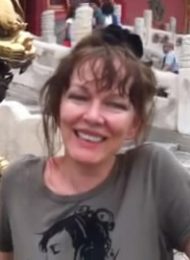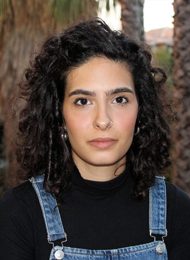Welcome to Ehud Zohary’s Lab.
Our research is focused on how the brain generates a representation of the world around us, combining incoming perceptual information with memory-based expectations, to act on it. To appreciate this, press the following link.
Current research in our lab is centered on two main aspects characterizing the visual scene analysis:
- Development: Vision following recovery from prolonged blindness;
- Hierarchical analysis and its implementation in the human brain:
We use a variety of techniques including psychophysical testing, eye tracking methods, functional MRI, and modelling using DNNs (deep neural networks) to study these issues.
Focus #1 Vision recovery:
We study a world unique population of children in Ethiopia that have been blind from birth due to bilateral cataracts and regain eyesight only years later. 
These children are found, diagnosed and receive medical treatment (i.e. surgery) by our team. But regaining eyesight is far from ensuring functional vision. The seminal studies of Hubel & Wiesel suggested that there is a “critical period” for normal vision development in the early years, after which opportunities for beneficial plastic changes in the brain are drastically limited. Thus, following their legacy, cataract surgery is typically done as early as possible, within months from birth. Our project is exceptional in having the opportunity to assess vision restoration after the presumed “critical period”, when most people would assume that permanent damage was already done.
We have been testing the recovery of visual function in this population of kids in the last 10 years. We study both simple (low-level) capabilities which may limit perception such as visual acuity, contrast sensitivity, motion perception, etc, as well as high level functions such as gaze understanding, social interaction understanding, face and body posture information extraction, and pattern completion (in slit-viewing conditions).


For full information please see our website: https://www.project-eyeopener.org/
Focus #2: Studying the brain mechanisms that enable object and scene understanding
How is the specific computational problem solved and what should be the specific characteristics of brain areas in the visual cortex, that match these predictions. See two examples below:
One particularly impressive capability of the visual system is our ability to identify the shape of an object moving through a narrow slit (termed anorthoscopic vision). In this case, the global shape can only be recovered by integration of information across the seqence of partial views. Using fMRI and multivoxel pattern analysis, we searched for brain regions that encode temporally integrated shape identity. We further required that the representation of shape should be invariant to changes in the slit orientation. We (Orlov & Zohary 2018) found strong evidence for a global encoding of shape in high-order lateral occipital cortex (LOC), but not in earlier processing stages. The slit-invariant representation of the various shapes in LOC also mirrored the structure of shape perceptual space as assessed by perceptual similarity judgment tests.
Another example is the interpretation of social scenes. Surprisingly, vision-based social scene understanding is ill-studied from both computational and neuroscience perspectives. We postulate that social scene understanding requires a series of processing steps, in a hierarchy of levels of representation, such that (1) lower-level brain regions encode social interaction primitives at the level of the individual agent (e.g. body posture, gestures, etc.); and (2) each type of social interaction is uniquely characterized by a pattern of these primitives (obtained across all interacting agents), encoded in downstream regions.








